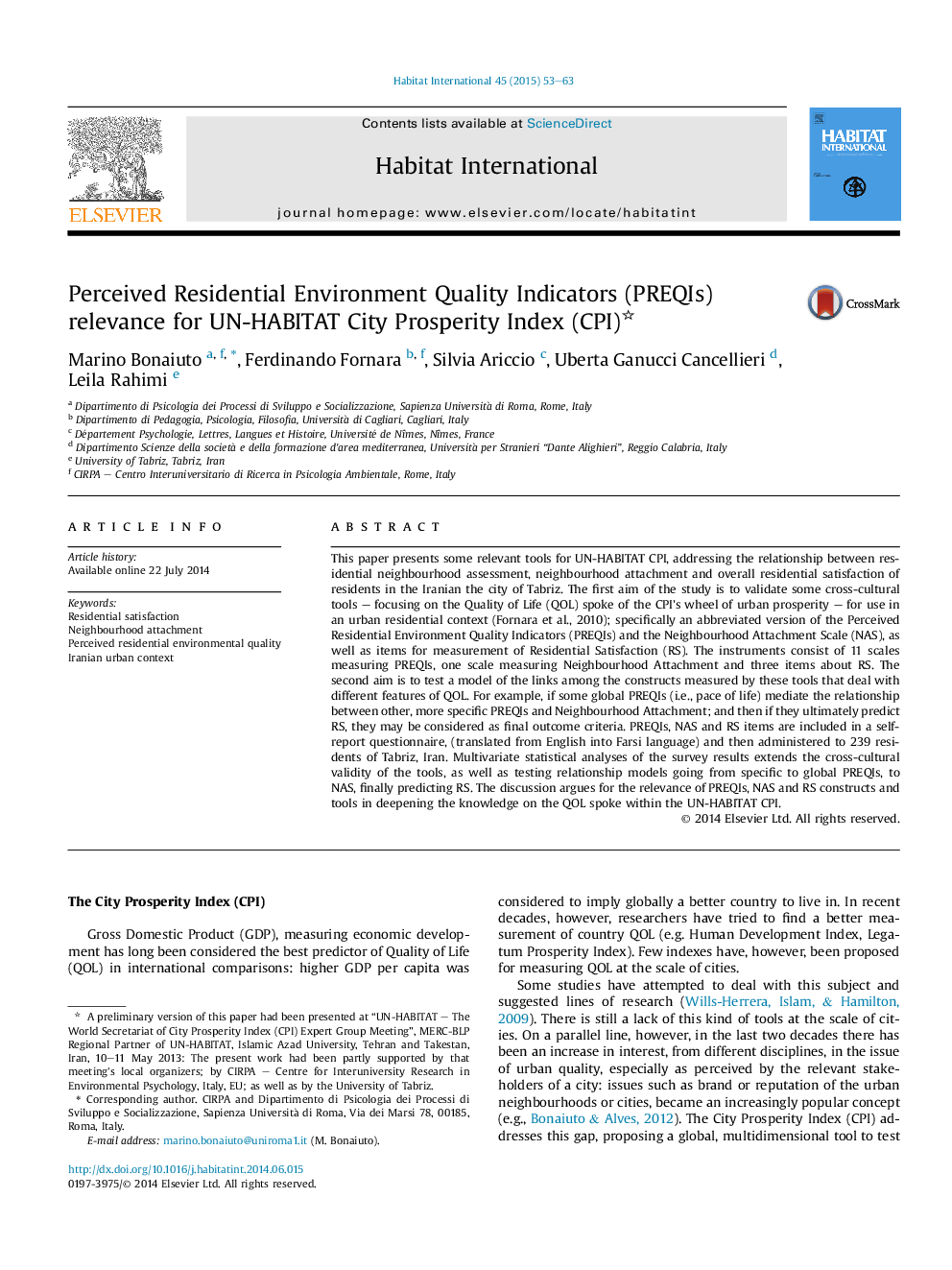| کد مقاله | کد نشریه | سال انتشار | مقاله انگلیسی | نسخه تمام متن |
|---|---|---|---|---|
| 1048035 | 945319 | 2015 | 11 صفحه PDF | دانلود رایگان |

• This paper applies the Perceived Residential Environmental Quality Indicators as Quality of Life indicators.
• PREQIs are validated in an Iranian urban context.
• Perceived residential environment quality is found to be related to neighbourhood attachment and residential satisfaction.
• The ‘pace of life's’ indicator is an important mediator between perceived quality and the people–environment relationship.
This paper presents some relevant tools for UN-HABITAT CPI, addressing the relationship between residential neighbourhood assessment, neighbourhood attachment and overall residential satisfaction of residents in the Iranian the city of Tabriz. The first aim of the study is to validate some cross-cultural tools – focusing on the Quality of Life (QOL) spoke of the CPI's wheel of urban prosperity – for use in an urban residential context (Fornara et al., 2010); specifically an abbreviated version of the Perceived Residential Environment Quality Indicators (PREQIs) and the Neighbourhood Attachment Scale (NAS), as well as items for measurement of Residential Satisfaction (RS). The instruments consist of 11 scales measuring PREQIs, one scale measuring Neighbourhood Attachment and three items about RS. The second aim is to test a model of the links among the constructs measured by these tools that deal with different features of QOL. For example, if some global PREQIs (i.e., pace of life) mediate the relationship between other, more specific PREQIs and Neighbourhood Attachment; and then if they ultimately predict RS, they may be considered as final outcome criteria. PREQIs, NAS and RS items are included in a self-report questionnaire, (translated from English into Farsi language) and then administered to 239 residents of Tabriz, Iran. Multivariate statistical analyses of the survey results extends the cross-cultural validity of the tools, as well as testing relationship models going from specific to global PREQIs, to NAS, finally predicting RS. The discussion argues for the relevance of PREQIs, NAS and RS constructs and tools in deepening the knowledge on the QOL spoke within the UN-HABITAT CPI.
Journal: Habitat International - Volume 45, Part 1, January 2015, Pages 53–63